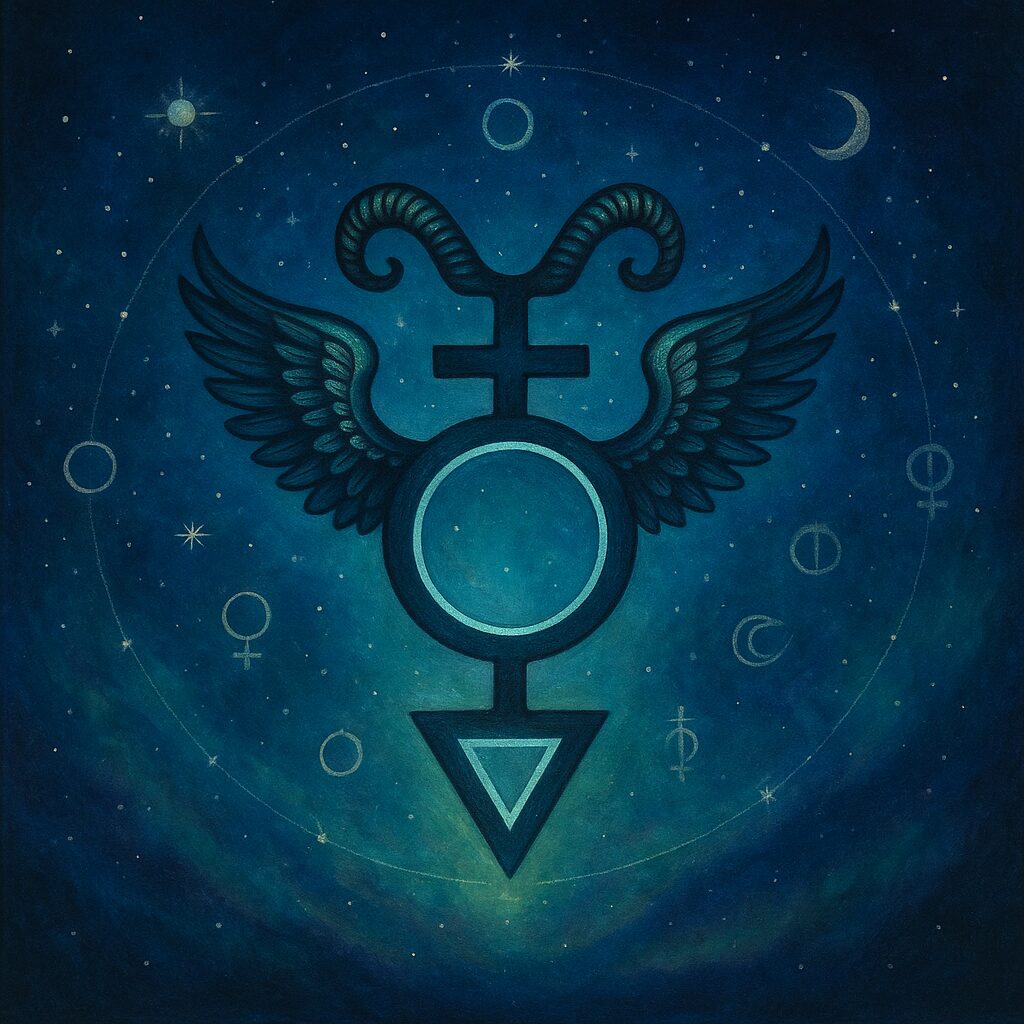Weaving the Old Threads
In the quiet spaces of forest groves and the hum of urban hearths, something ancient stirs. Neopaganism, at once a reclamation and a reimagination, invites us to reach back—through ruins and whispers—to reweave the broken threads of sacred relationship. As a modern practitioner drawn to both the mystery and the scholarship of the craft, we see paganism not merely as belief, but as a living, evolving tapestry that speaks to the soul and stirs the soil beneath our feet.
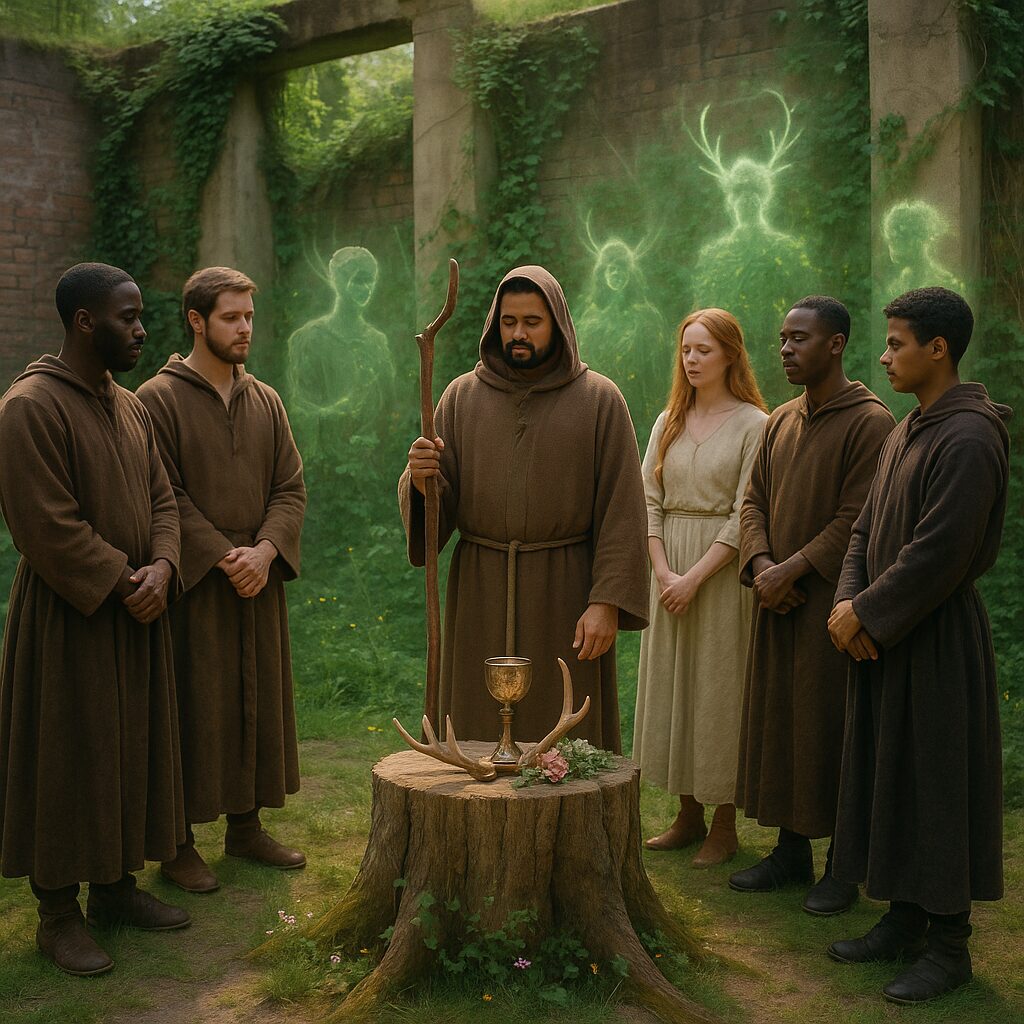
To understand Neopaganism, we must first journey through its ancestors. The pre-Christian spiritual systems of Europe—Celtic polytheism, Norse animism, Greco-Roman temple cults, and the Slavic devotionals—all shared traits now echoed in our rites: reverence for nature, localized deities, seasonal celebration, and the sacredness of place. With the rise of Christianity and empire, these spiritual traditions were demonized, displaced, or absorbed.
Yet they never truly vanished. Across medieval Europe, folk traditions persisted: midsummer fires, offerings to the land, ancestor veneration. In the 19th century, fueled by Romanticism and a growing interest in folklore and the occult, scholars and mystics began to catalog and mythologize the remnants. This period saw the rise of movements such as Theosophy and the Hermetic Order of the Golden Dawn, which helped reintegrate esoteric wisdom into public consciousness.
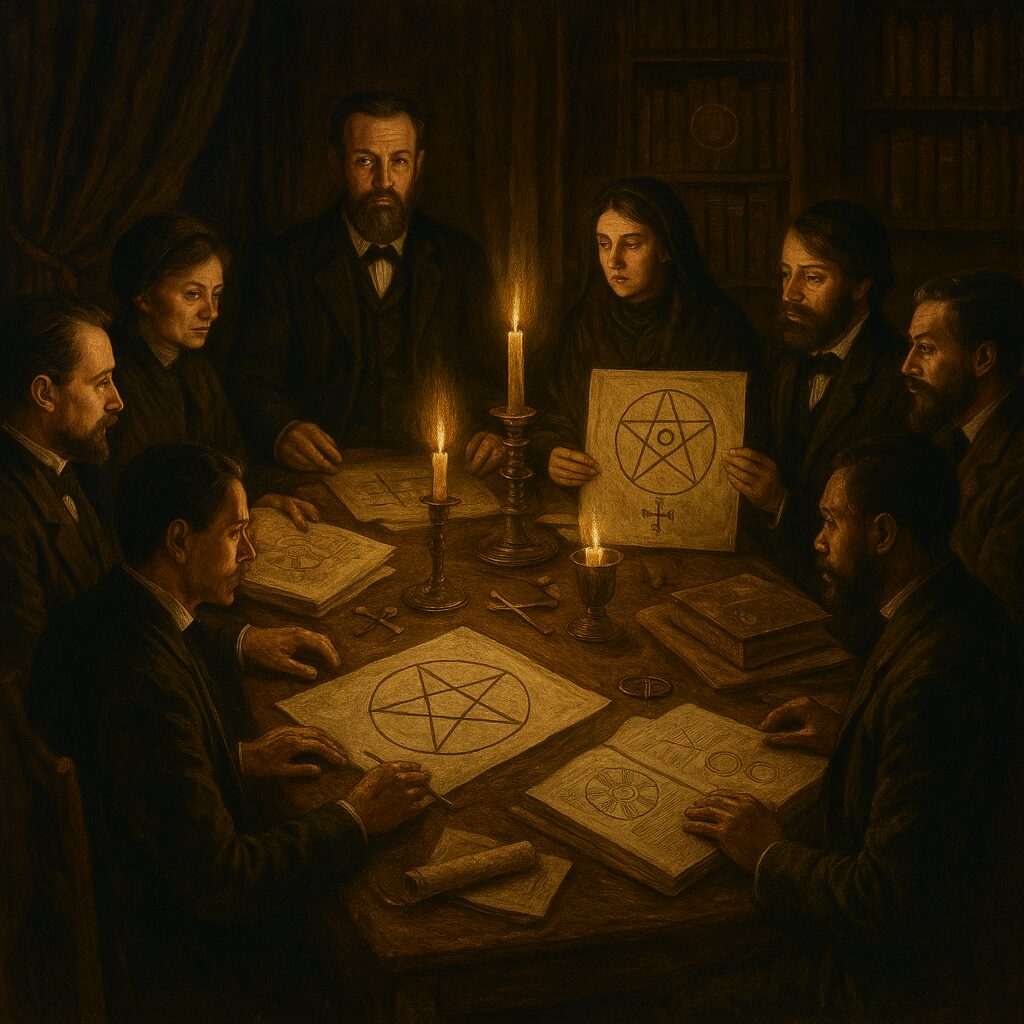
Modern Neopaganism emerged in the mid-20th century with a fire that smoldered long in the ashes. Gerald Gardner’s public revelation of Wicca in the 1950s—interwoven with ceremonial magic and alleged folk survivals—ignited widespread curiosity. Doreen Valiente, a poet-priestess and influential witch, brought lyrical beauty and devotional clarity to Gardnerian Wicca, shaping liturgy that endures today.
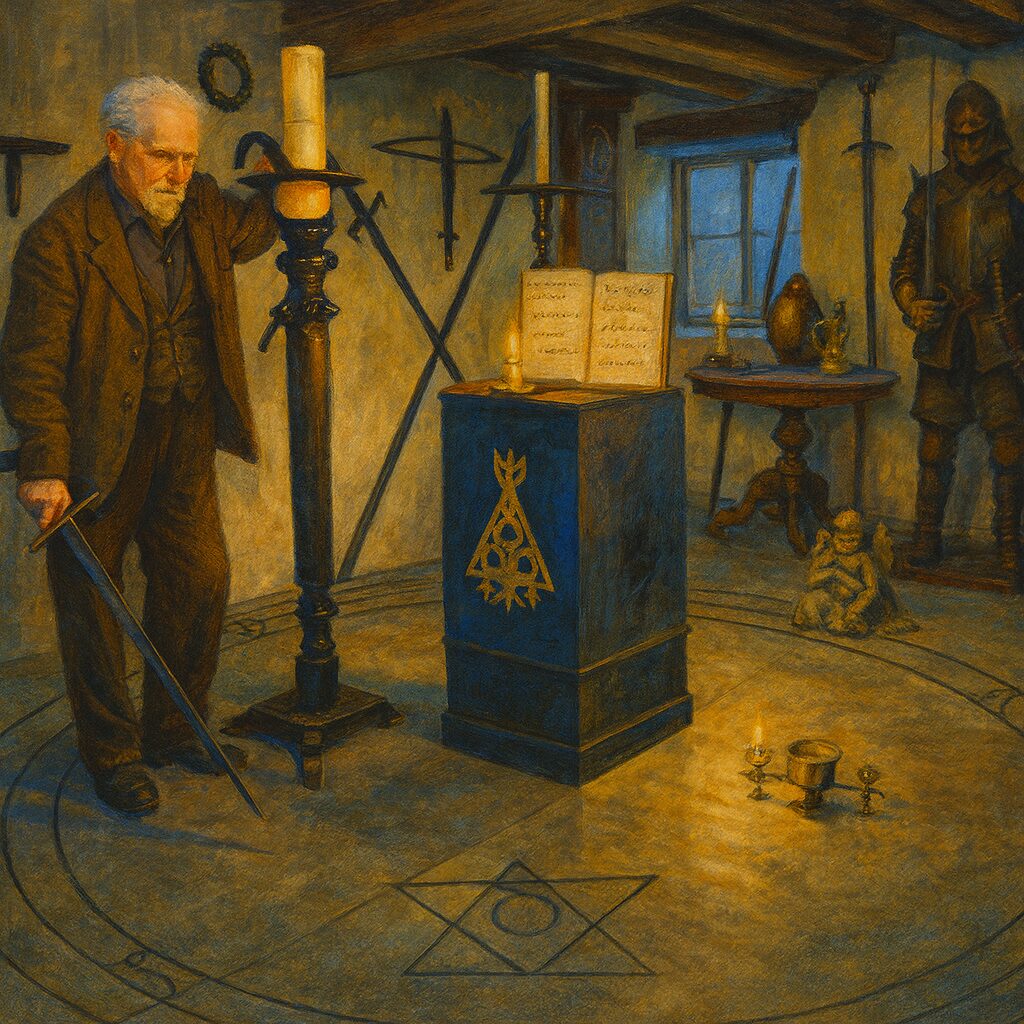
Simultaneously, reconstructionist movements began to form—groups like Hellenic polytheists and Heathens—who sought to revive ancestral traditions based on linguistic, archaeological, and mythological records. Unlike eclectic Wicca, these traditions emphasized historical accuracy and cultural continuity.

In the 1970s and beyond, feminist spirituality and ecological concern added new dimensions. Starhawk’s The Spiral Dance (1979) fused politics, magic, and goddess reverence, offering a template for communal, activist, and embodied ritual. Her vision of the immanent divine and interconnected world rippled through covens, camps, and classrooms alike.

Ronald Hutton’s The Triumph of the Moon (1999) brought academic rigor to the study of Pagan history, separating myth from invented lineage, and—paradoxically—deepening the mystery. Hutton reminds us that invented traditions can be no less sacred if they nourish the spirit and connect us to what is lost.
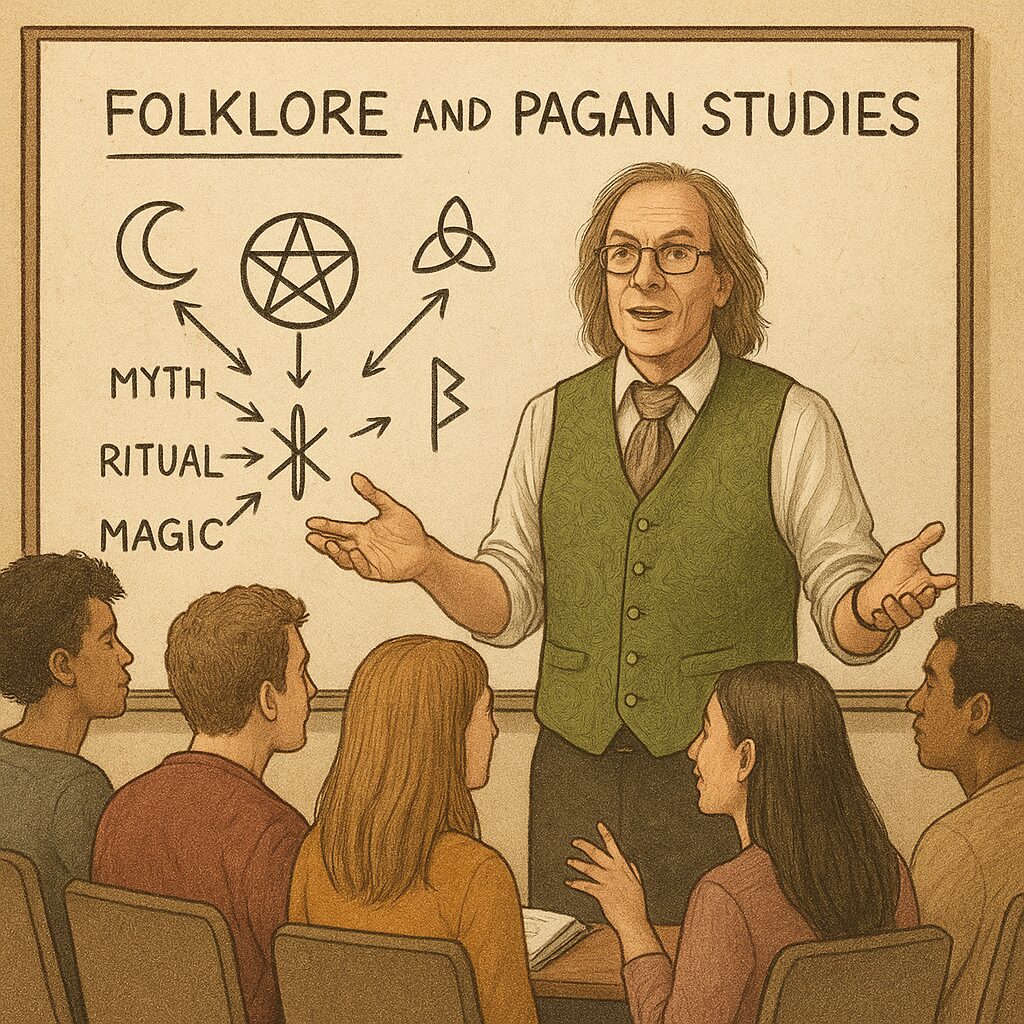
At the heart of Neopagan practice lies a rhythm: the Wheel of the Year, turning through the sabbats of solstice and equinox, cross-quarter and harvest. These festivals honor solar progression and agricultural life, but also deeper mythic truths—the descent of the goddess, the sacrifice of the god, the quiet of winter, and the ecstasy of Beltane flame.
Ritual in Neopaganism is not merely symbolic—it is participatory cosmology. When we cast a circle, we create sacred space that mirrors the cosmos. When we call the quarters, we invoke elemental energies not as abstract concepts, but as living presences—air in our breath, fire in our blood, water in our tears, earth in our bones.
Our gods, too, are near: Brigid, lighting the forge and hearth; Cernunnos, antlered in the woods; Freyja of the falcon cloak; Hermes on the wind. Whether one calls on archetypes or deities, ancestors or spirits of place, the heart of the ritual is relationship—sacred conversation and recognition.
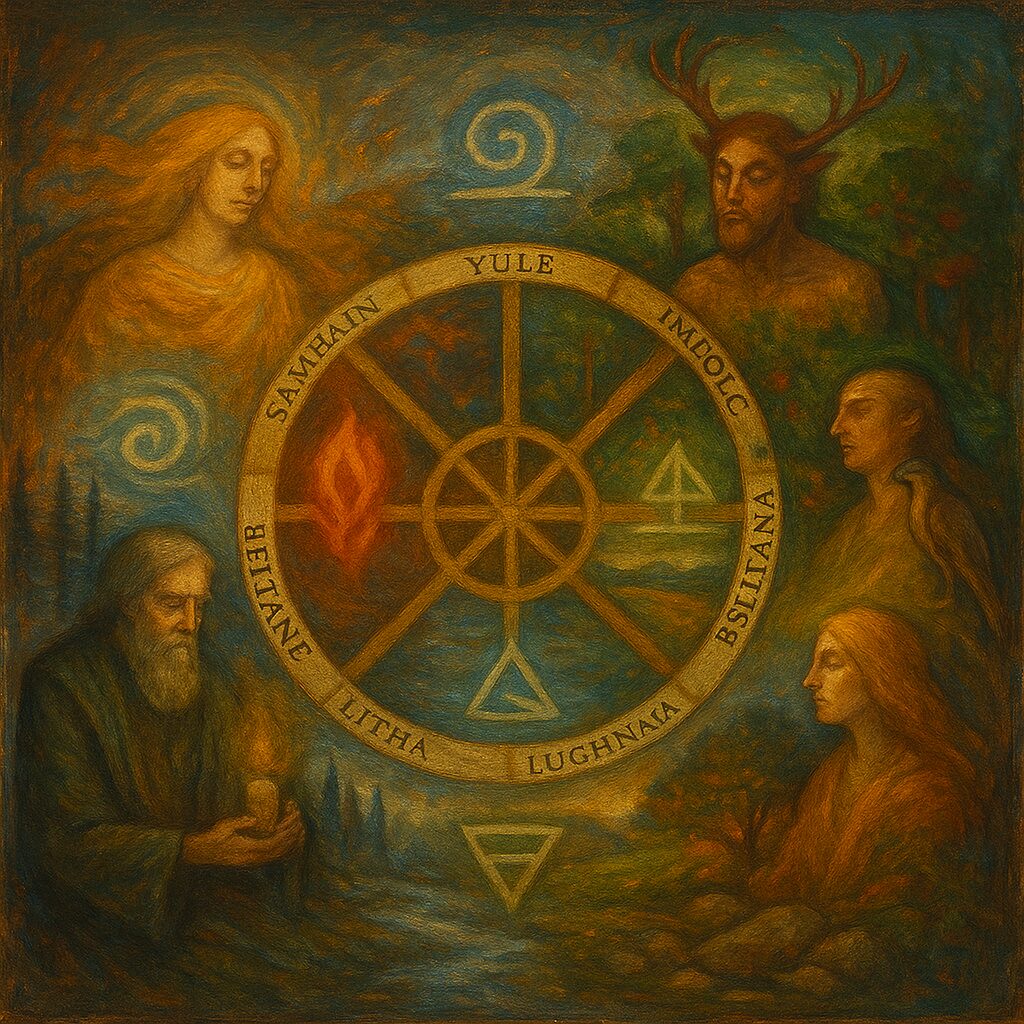
A distinct stream within Neopaganism flows from the old belief in spirits—of land, of ancestor, and of the in-between. While many practitioners work with deity, others tend the subtle alliances between humans and the fae, the genius loci (spirits of place), or household spirits like the Slavic domovoi.
Faerie work is both enchanting and cautionary. It involves attunement to liminal spaces—twilight, crossroads, shorelines. Offerings are common: cream, bread, song, or silence. Practitioners may seek dream messages, hedge-crossing journeys, or communion through nature reverence.
This is not fantasy, but a relational worldview. In such practice, the land is alive, and every stone may house a whisper. Here, myth is ecology, and magic is an ethic of care.
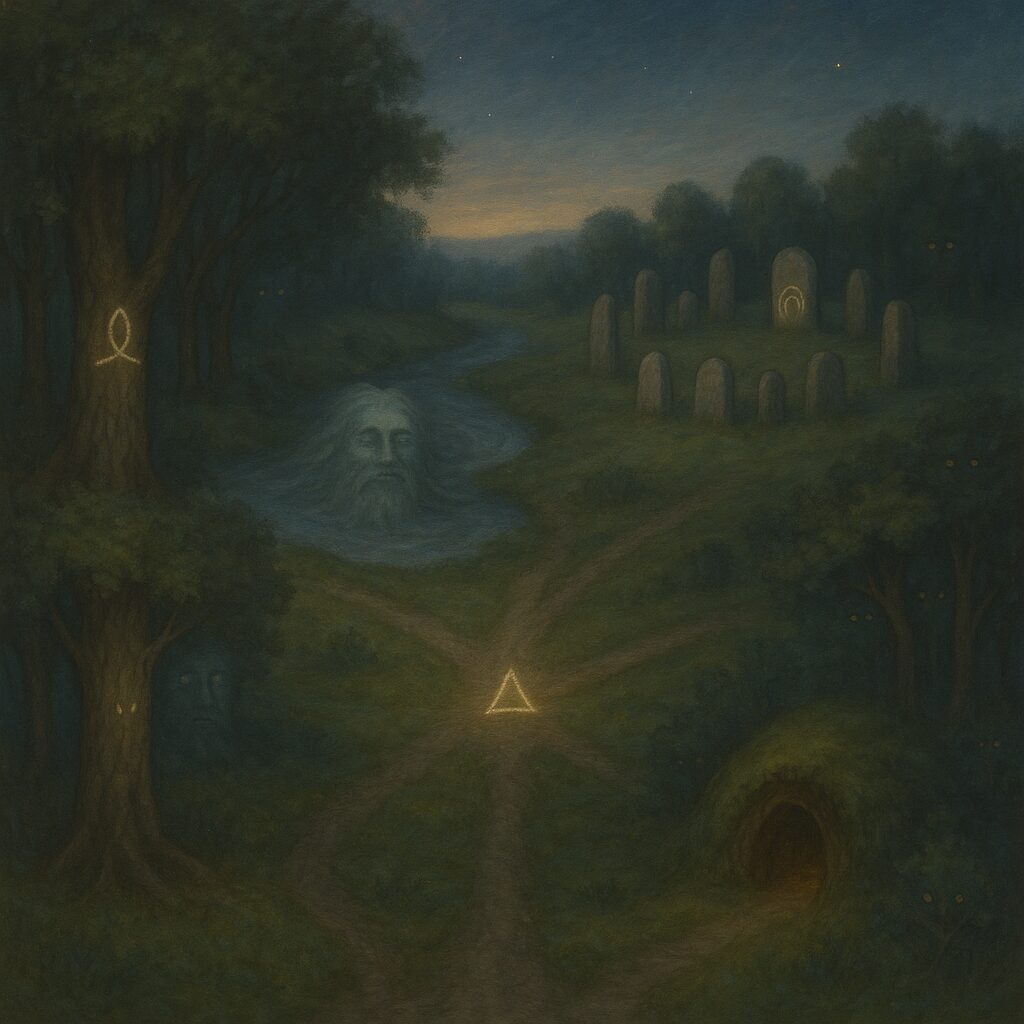
Neopaganism today is kaleidoscopic. From Norse Heathens honoring the Aesir and Vanir, to Druids studying bardic lore and tree ogham, to urban witches combining planetary hours with subway sigils, the movement resists easy categorization.
Some identify as Wiccan; others explicitly reject Wicca in favor of folk magic, witchcraft, or polytheism. Some traditions are closed or initiated; others are solitary or radically eclectic. The tension between scholarship and intuition, between tradition and innovation, is not a flaw but a dynamic interplay.
Neopaganism also offers sanctuary to those often marginalized in mainstream religions: LGBTQ+ practitioners, neurodivergent folks, women reclaiming priestesshood, and those deconstructing colonial faiths. Its ethical core—”If it harm none, do as you will”—resonates with freedom and responsibility.
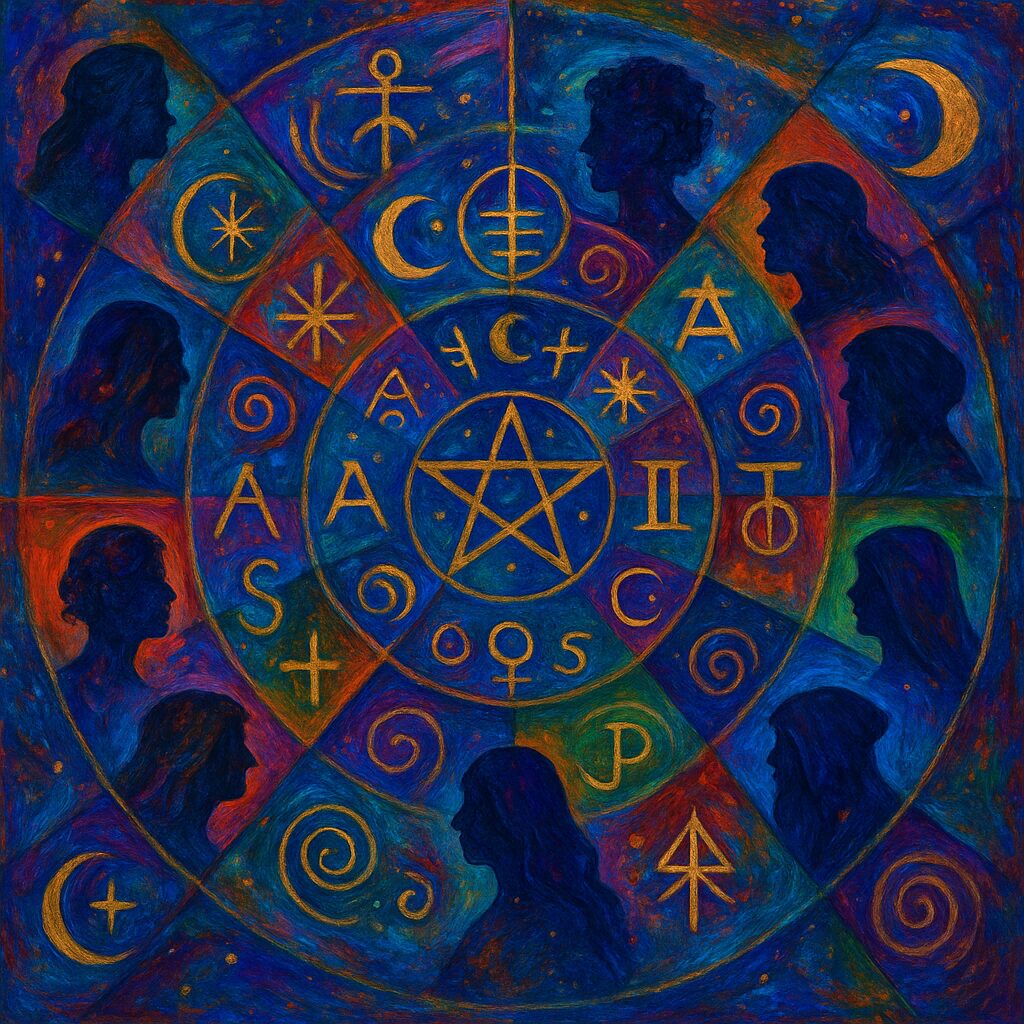
Neopaganism is not a relic but a revival. It does not merely reenact the past—it sings to it, dances with it, and makes offerings where silence once lay. Its roots are deep, its blossoms diverse. And its future—like its deities—is shaped in the ritual fire, in the whispering woods, and in the willing heart.
Whether one finds the gods in ancient temples or in backyard gardens, Neopaganism offers something rare in modern spiritual landscapes: a path that honors the old without calcifying it, that embraces myth as truth, and truth as mystery.
We do not walk backward into the forest. We walk forward with ancient songs in our bones, weaving the old threads anew.
